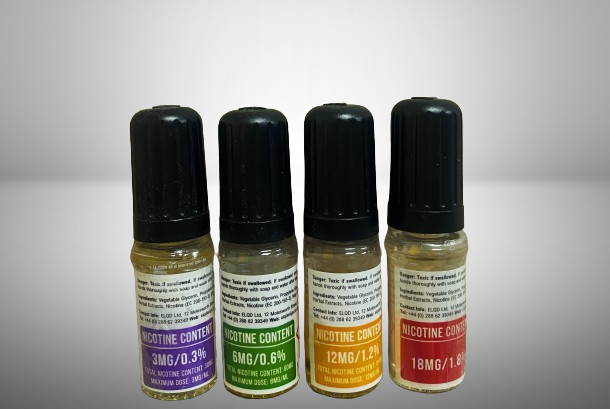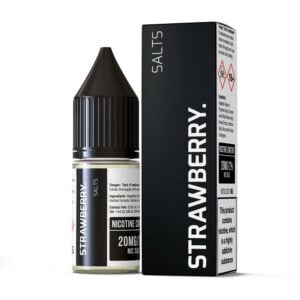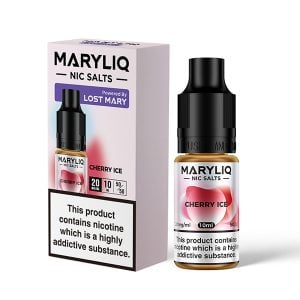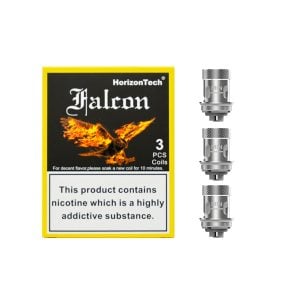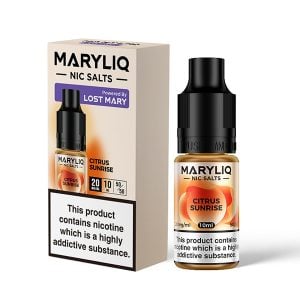Recently, a study published in the Lancet Regional Health examined the potential public health benefits of introducing lower nicotine levels in cigarettes. The aim of their research was to examine the effects of reduced-nicotine cigarettes in the context of the availability of alternative nicotine delivery systems (ANDS), as no large clinical trial had previously determined this.
The study, titled “Reduced nicotine in cigarettes in a marketplace with alternative nicotine systems: randomized clinical trial”, was carried out across six sites for twelve weeks, where smokers were randomised to an experimental marketplace containing cigarettes of either very low nicotine content (VLNC) or normal nicotine content (NNC), with access to alternative nicotine delivery systems, e.g. e-cigarettes.
The study predicted that “reducing nicotine to minimally addictive levels in all cigarettes and other combusted products sold in the U.S. could avert an estimated 8.5 million tobacco caused deaths by 2100”.
The results indicated that by the end of the study, participants in the VLNC group smoked a significantly lower amount of cigarettes – seven – in comparison to participants in the NNC group – thirteen. It was established that those using VLNC cigarettes were three times more likely to attempt quitting smoking. Participants in the VLNC group also accomplished greater cigarette-free days than those in the NNC group, averaging eighteen compared to fourteen, with 20% abstaining for at least seven days.
These results demonstrated that substantially reducing the nicotine levels in cigarettes decreased smoking behaviour and toxicant exposures, therefore having the potential to increase smoking abstinence and result in improved individual and public health by reducing smoking consumption.
During their analysis of the study, it was suggested that having only VLNC cigarettes in the marketplace might accelerate switching to ANDS and increase the likelihood of only using these alternative products compared to the current marketplace.
The study’s authors acknowledged a Cochrane report during their post study discussion, which supports the use of ANDS for quitting NNC cigarettes, stating that there is high-certainty evidence that quit rates were higher for people using e-cigarettes with nicotine compared to those using nicotine replacement therapies (NRT).

Effect of Immediate vs Gradual Reduction in Nicotine Levels
Similarly, an article published in the journal ‘Frontiers in Psychiatry’ (2022) aimed to investigate the effects of the immediate and gradual reduction in nicotine levels in cigarettes on cigarette craving and to detect any changes in smoking behaviour.
Titled “The effects of immediate vs gradual reduction in nicotine content of cigarettes on smoking behavoir: an ecological momentary assessment study”, the study’s authors cited that “the pain point of smoking addiction is mainly manifested in the high relapse rate, and craving is the key factor in precipitating relapse. Thus, reducing craving has become the main target in clinical smoking cessation.” They noted that evidence from several studies suggest a gradual reduction in nicotine levels is considered a potential approach to smoking cessation, although an immediate reduction may be even more effective.
The study recruited 74 participants aged 18 and over from Daxing District, Beijing of which all met the criteria, including their average daily smoking amount equalling 5 or more cigarettes for at least 1 year, no intention of quitting in the past 30 days and stable psychiatric conditions. The participants were randomly assigned to 1 of 2 experimental conditions: Immediate reduction to 0.1mg of nicotine per gram of tobacco cigarettes, and gradual reduction from 1.0 to 0.1mg of nicotine per gram of tobacco cigarettes. 52 participants completed a baseline period of 1 week prior to the 16 week experiment.
Those assigned to the immediate reduction group were required to smoke 0.1mg of nicotine/gram of tobacco cigarettes for 16 weeks and those in the gradual reduction group were required to reduce their nicotine levels once every 4 weeks: 0.6mg from week 1 to week 4; 0.3mg from week 4 to week 8; and 0.1mg from week 8 to week 16.
The study’s results demonstrated that cravings were significantly lower and decreased faster in the immediate nicotine reduction group and there was an increase in cigarette-free days over time. The authors concluded: “Immediate reduction method is more effective than gradual reduction method, because nicotine immediate reduction method is more conductive to promote smokers to quit smoking, faster to achieve potential public health effects.”
The Results of Allowing Smokers to Determine Their Nicotine Levels
In 2019, a study carried out by Queen Mary University of London recommended that allowing smokers to determine their nicotine levels can provide a great boost in aiding them with quitting smoking.
The study’s author, Dunja Przuli from Queen Mary’s Wolfson Institute of Preventive Medicine said:
“Smokers determine their nicotine intake while they smoke, but when they try to quit, their nicotine levels are dictated by the recommended dosing of the treatment. These levels may be too low for some people, increasing the likelihood that they go back to smoking.
Medicinal nicotine products may be under-dosing smokers and could explain why we’ve seen limited success in treatments, such as patches and gum, helping smokers to quit. A change in their application is now needed.
Our findings should provide reassurance to smokers that it is okay to use whatever nicotine doses they find helpful.”
Dunja Przuli

Published in the journal ‘Addiction‘, the study examined 50 smokers in a tobacco dependence clinic in Argentina where they trialled a combined approach of ‘pre-loading’ nicotine priot to their quit date and adjusting nicotine levels based on their feedback.
The participants started on one daily 21mg nicotine patch four weeks prior to their quit date. This dosage was then increased weekly by another 21mg patch, up to a maximum of 84mg/day, unless participants reported adverse effects or chose not to increase the dose. After the quit date, the dosage was reduced by 21mg each week, until it reverted back to the standard dose of 21mg/day four weeks later. Throughout the pre-quit period, participants were advised to continue to smoke as they desired and were offered additional oral NRTs.
Findings from the study suggested that smokers can tolerate higher nicotine doses than currently recommended, with 90% of the 50 participants progressing to at least three patches (63mg/day) and 72% progressing to four (84mg/day). The study provided significant reassurance that increasing the nicotine levels can help current smokers to quit, as during the pre-quit period, smoke intake, enjoyment of smoking and cigarette consumption declined significantly, from 20/day a the start to 6/day by the quit date.
Professor Peter Hajek, Director of the Health and Lifestyle Research Unit and Professor of Clinical Psychology at QMU added:
“Smokers are perfectly capable of determining which doses of nicotine they find helpful. There is no risk of dangerous overdose, because nicotine includes an effective safety valve in the form of nausea.
Our results also suggest that one of the reasons e-cigarettes are so much more popular and potentially more effective than other nicotine replacement treatments is that smokers can adjust their nicotine intake according to their needs.”
Professor Peter Hajek
The Negative Impact of Reducing Nicotine Levels in Tobacco Cigarettes
Experts in the tobacco health sector argue that reducing nicotine levels in cigarettes may have a negative effect as smokers tend to compensate for the reduction by increasing the amount of cigarettes they smoke or inhaling more deeply, thus increasing their exposure to the tar and chemicals contained. Many studies have found that reducing nicotine levels will not lead to increased quit rates among smokers who are not intending on quitting.
A study published in 2015, “Effects on reducing the nicotine content of cigarettes on cigarette smoking behaviour and tobacco smoke toxicant exposure: 2-year follow up”, aimed to determine whether after smoking VLNC cigarettes and then returning to their normal cigarettes, if they would continue using their reduced nicotine levels.
The study was carried out in a community-based clinic, with 135 smokers who were not interested in quitting. The participants were randomised into one of two groups: research and control.
The research group smoked their normal cigarette brand, followed by five types of research cigarettes containing progressively lower nicotine levels for one month each and then six months at the lowest nicotine level (0.5mg/cigarette), before continuing for twelve months without intervention. The control group smoked their normal cigarette brand throughout the same period of time.
The study’s results showed that after seven months of smoking VLNC, the participant’s nicotine intake remained below baseline, with no significant change in cigarettes smoked per day. Furthermore, during the twelve-month follow-up indicated that nicotine intake in the reduced nicotine smokers returned to baseline levels and that quit rates were low, 7.5% for the research group and 2% for the controls.
Increase in Higher Nicotine Levels Proving Greater Effect in England
A study from University College London (UCL) found that an increase of 32.5% vape users used high-strength nicotine in January 2024 compared to an average of 3.8% between July 2016 and June 2021.
The study’s lead author Dr Sarah Jackson, of the UCL Institute of Epidemiology and Health Care said:

“Our study shows a sharp increase in the use of high-strength nicotine e-liquids in England since 2021.
Nicotine may be addictive but it is not what causes the great majority of harm from smoking. For smokers trying to quit, vaping with higher strength nicotine is likely to be more effective, as it satisfies cravings more quickly and provides better relief from withdrawal symptoms.”
Dr Sarah Jackson
With regards to the pending vape tax due to hit in 2026, Jackson outlined how the increased rates may push vape users onto e-liquids with lower nicotine levels, potentially disrupting smoking cessation attempts as around 40% of smokers who had quit within the last year were reportedly using vaping products which would attract the highest proposed tax rate.
Taxing Vape Products Based on Nicotine Levels May Prove Ineffective
Dr Sharon Cox, senior author on the study and also of UCL Institute of Epidemiology and Health Care, said:
“Taxing products according to nicotine strength may also result in people using a lower, cheaper strength and vaping more, as a person with nicotine dependence will alter their behaviour to get the required nicotine dose in their system. It therefore may increase the amount of liquid used and vapers’ exposure to potential toxicants.”
Dr Sharon Cox

Co-author of the study and CEO of Action on Smoking and Health (ASH), Deborah Arnott said:
“Curbing underage vaping can best be achieved by making all vapes less appealing and increasing the price at point of sale, whatever their nicotine content. Those are the policies which will be most effective in stopping children from starting to vape in the first place. However, if we are to also ensure that vapes remain an effective quitting tool for adults, smokers should not be discouraged from using higher nicotine content vapes, which are likely to be more effective quitting aids.”
Deborah Arnott

